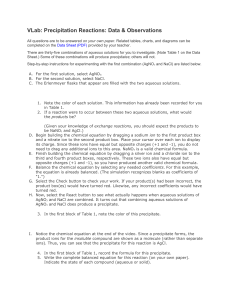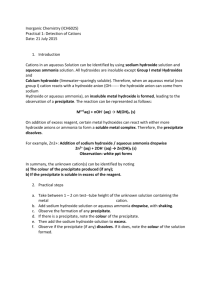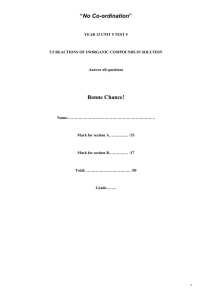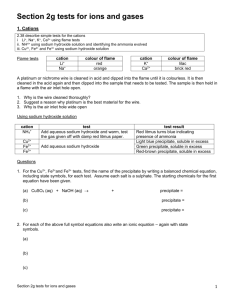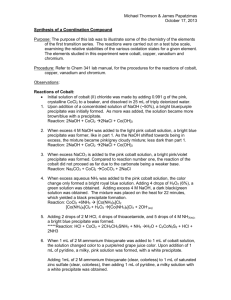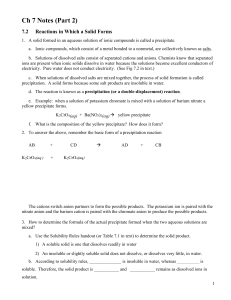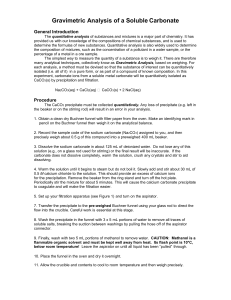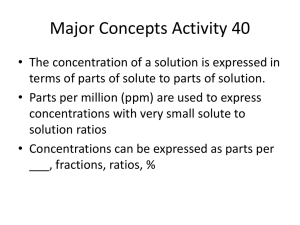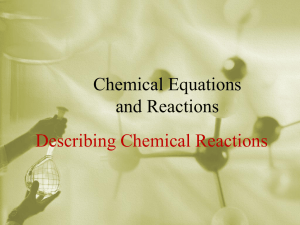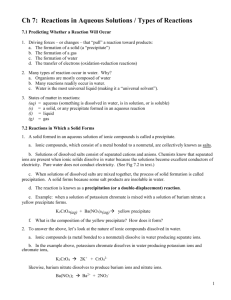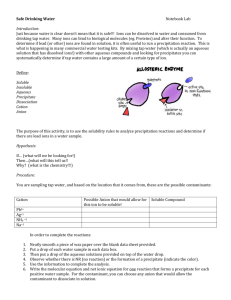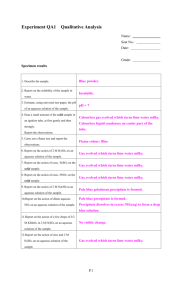Precipitate Lab Report Power Point with Answers
advertisement
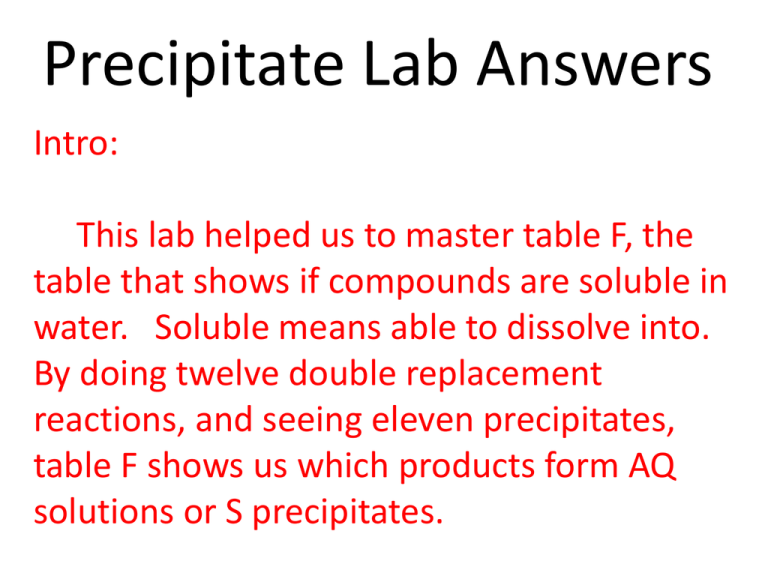
Precipitate Lab Answers Intro: This lab helped us to master table F, the table that shows if compounds are soluble in water. Soluble means able to dissolve into. By doing twelve double replacement reactions, and seeing eleven precipitates, table F shows us which products form AQ solutions or S precipitates. Formulas from the back page of the Precipitate Lab copper (II) sulfate magnesium nitrate Cobalt (II) nitrate CuSO4 Mg(NO3) 2 Co(NO3) 2 sodium carbonate sodium phosphate Na2CO3 Na3PO4 sodium hydroxide NaOH potassium chromate K2CrO4 Reaction precipitate name precipitate formula A copper (II) carbonate CuCO3 B magnesium carbonate MgCO3 C cobalt (II) carbonate CoCO3 D copper (II) phosphate Cu3(PO4)2 E magnesium phosphate Mg3(PO4) 2 F cobalt (II) phosphate Co3(PO4) 2 Reaction precipitate name precipitate formula G Copper (II) hydroxide Cu(OH)2 H Magnesium hydroxide Mg(OH)2 I Cobalt (II) hydroxide Co(OH)2 J Copper (II) chromate CuCrO4 K No reaction x L Cobalt (II) chromate CoCrO4 Conclusion for Precipitate Lab (2 slides long) There are 6 main indicators of a chemical reaction, shortened to remember to TOPIC-B. Temperature change, odor change, precipitate formation, irreversibility, color change, and new bubble formation are the evidence for a chemical reaction occuring. Not every time one of these changes is proof of a chemical reaction, but often they are. Sometimes chemical reactions can occur with no obvious “evidence” from TOPIC-B. Precipitates occur when a double replacement reaction happens. To start, you need 2 aqueous solutions. Aqueous means that the compound is dissolved in WATER. If we put many ionic compounds in water, the ions separate (the water has the ability to separate them from each other) and in solution are both cations and anions floating around. This is a phase change, from solid to aqueous. This is NOT a chemical reaction, even though sometimes this process forces a temperature change. Evaporating the water results in a return to the ionic compound solid. When we mix these two sets of ions floating in water, sometimes a cation and anion are so attracted together, they bond into a solid, and sink to the bottom of the beaker. To determine which cation-anion pair forms the solid precipitate, we use table F on the reference tables. This table will tell us if an ionic compound will be aqueous or insoluble (not able to dissolve into water, or it forms a solid precipitate). If the results of putting 2 aqueous solutions together results in the formation of 2 new aqueous solutions, without a precipitate forming, no reaction really occurred. Rather you just mixed the two solutions together, making a homogenous mixture (the same throughout, mixed with no new properties). Without the precipitate, no double replacement reaction happened. If you start with only one aqueous solution, and an atom (or HONClBrIF twin), that is the set up for a single replacement reaction. We use table J for that type of reaction. Synthesis has 2 or more small substances combining into one larger product. Decomposition is just the reverse of synthesis. One larger reactant forms 2 or more products. Combustion always has a hydrocarbon (compound with just hydrogen and carbon) combining rapidly with oxygen, always forming carbon dioxide and water. Sometimes we’ll see an oxygenated hydrocarbon molecule combusting too. An oxygenated hydrocarbon contains hydrogen and carbon and oxygen, examples are sugars, alcohols, or ethers. I love chem, the end.
